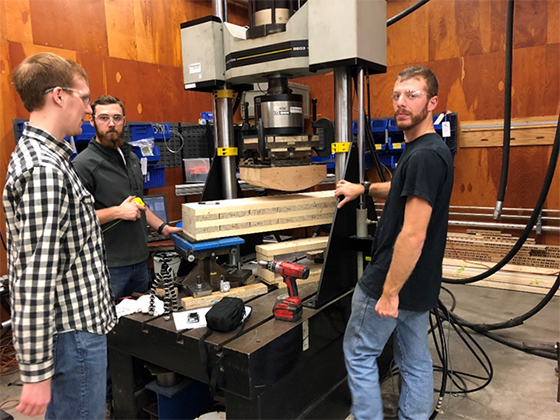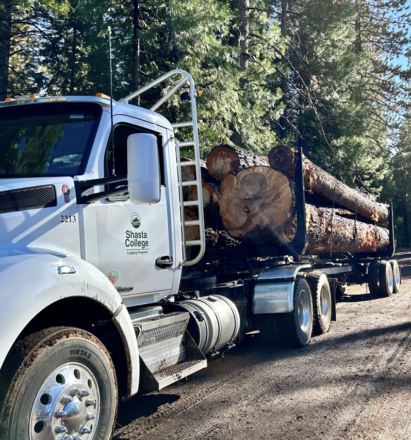Research Helps Build the Future Industry

When we talk about the supply chain at FRA, we’re focused on the woods to the mill. Our emphasis is on supporting the growing, harvesting and trucking of wood to the mills, so that a renewable resource can be turned into a range of products. But what then? As important as the supply chain is, it operates in service of markets – lumber, paper, energy and more. As these markets grow, change and evolve, it is important that we are always asking how the forests of the U.S. can be providing an even greater range of products to meet society’s needs.
Last week, I had the opportunity to tour the Advanced Structures and Composites Center at the University of Maine with a team from FRA. This center conducts ground-breaking research on a range of composite materials, finding new applications for wood. They have been active in researching better ways to manufacture cross-laminated timber, applications for oriented strand lumber, and the testing of Norway Spruce lumber for use in construction. That’s just on the wood side – the center has extensive projects involving offshore wind, nanocomposites, aerospace and defense. By bringing world-class composite researchers into contact with wood and its range of properties, new ideas and applications can develop that use wood in ways we can’t yet imagine.

FRA Director of Operations Claire Gedde and President Deb Hawkinson learn about groundbreaking research at the University of Maine’s Advanced Structures & Composites Center from Wood Composites Manager Russell Edgar.
Based at the University of Maine, the center not only conducts cutting-edge research – it also trains the next generation of professionals that will build our industry. By building, testing (and breaking) wood composites, students get experience and real-world training that prepare them for the workforce in ways a textbook can’t. It also exposes them to new ideas and ways of problem-solving that will be invaluable as the forest industry evolves.

Students at the University of Maine’s Advanced Structures and Composite Center prepare to stress test a small piece of cross laminated timber.
At FRA, we are focused on growing, harvesting, transporting and handling wood. That’s critical, and mills can’t run without a functioning and efficient supply chain. As we work on supporting this side of the industry, it’s important to remember the wood our members grow, harvest and transport needs a market, and that a diversity of markets can provide benefits for the entire industry. Research being conducted in private, university and federal labs across the country has the potential to strengthen existing and build new markets for wood, and that benefits the entire industry.


